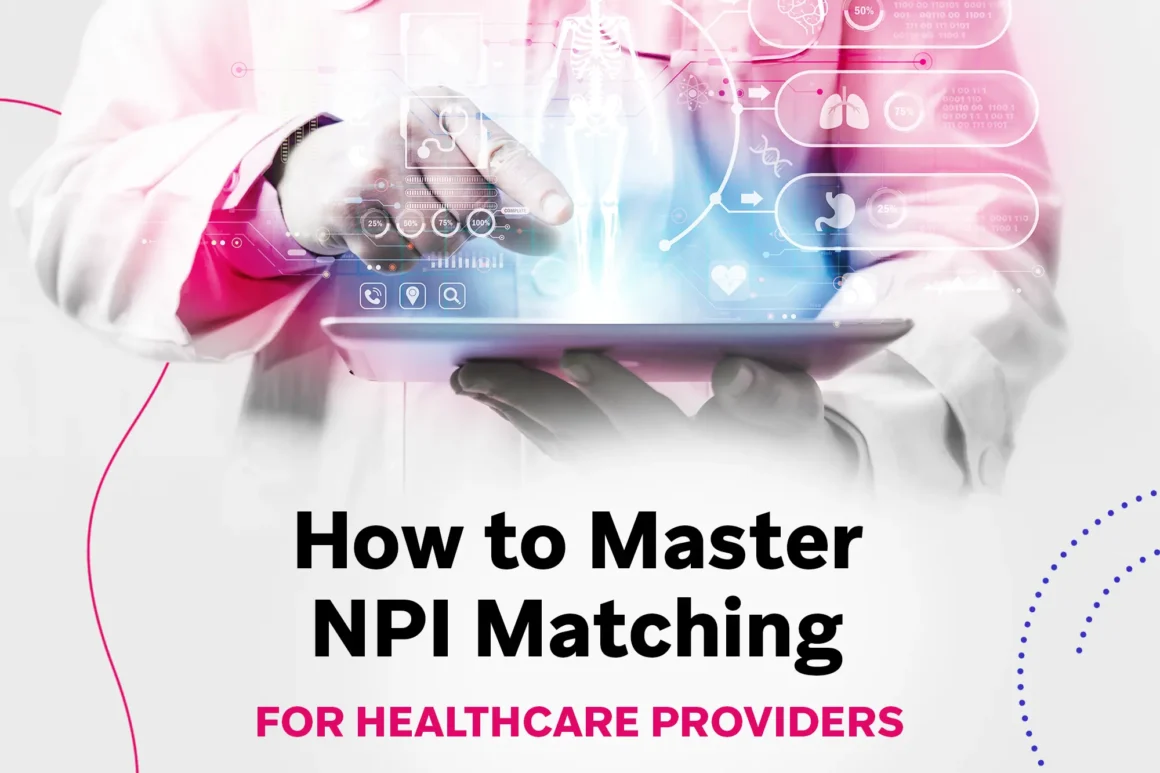NPI matching is crucial for healthcare providers to ensure they are accurately identified in various administrative and financial systems. Covered entities, such as healthcare organizations and providers classified under HIPAA, and covered providers, which include those required to obtain and use NPIs for electronic transactions, must comply with NPI matching requirements to maintain HIPAA compliance.
This process involves associating National Provider Identifier numbers with healthcare professionals’ digital identities. NPI matching is mandated by federal regulation and is essential for financial transactions adopted under HIPAA, including billing and electronic claims.
Understanding NPI matching can help streamline communication, reduce claim denials, and maintain compliance with regulations. In this article, you’ll learn the essentials of NPI matching, its benefits, challenges, and best practices.
Key Takeaways
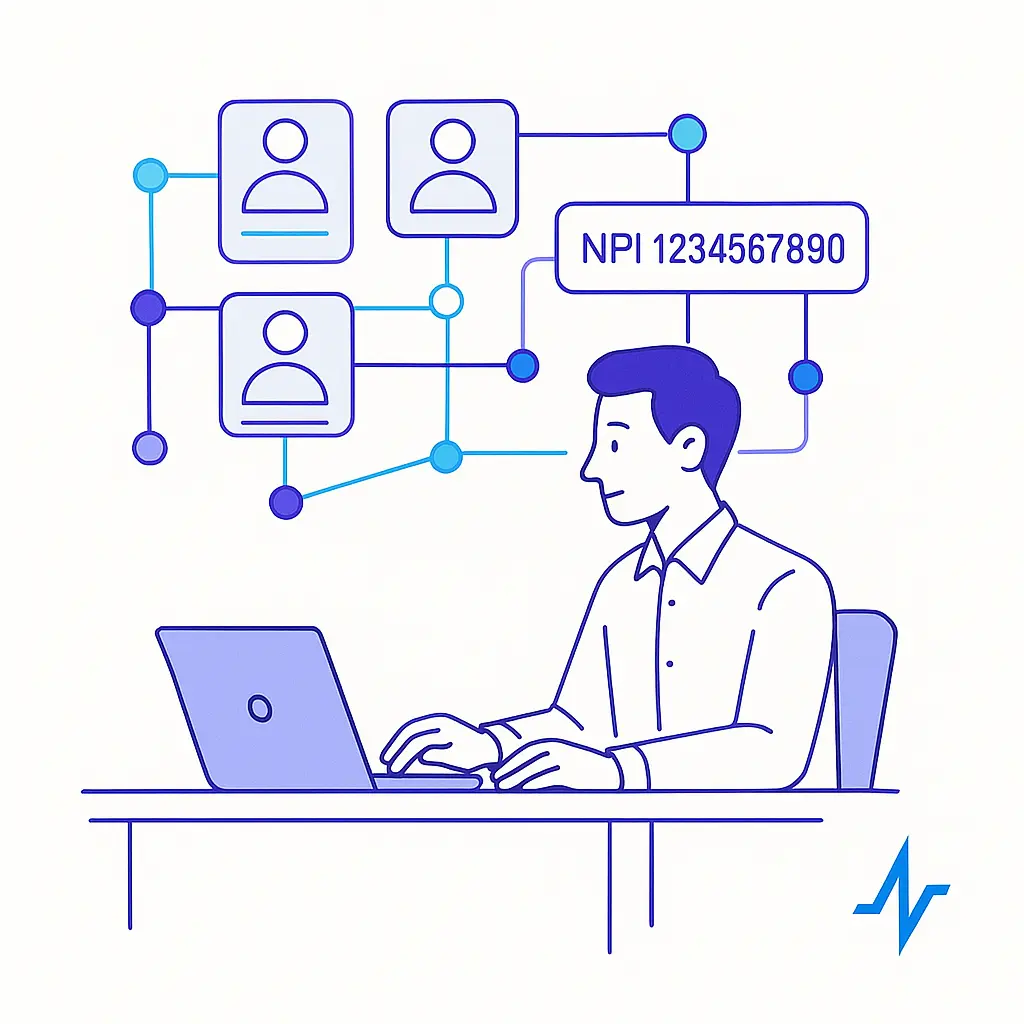
- NPI matching is essential for accurate provider identification and operational efficiency in healthcare, linking national provider identifiers with healthcare professionals’ digital identities.
- Accurate NPI matching enhances regulatory compliance, billing accuracy, and protects sensitive healthcare data, while common challenges include duplicate NPIs and outdated information.
- Pulse Health offers innovative tools and proven methodologies for effective NPI matching, resulting in significant improvements in claim denials, billing accuracy, and reduced administrative costs.
Understanding NPI Matching
NPI matching is the process of associating national provider identifier numbers with the digital identities of healthcare professionals. These NPIs are 10-digit numbers that uniquely identify healthcare providers, serving as a key element in the administrative and financial transactions in the healthcare sector. The primary purpose of acquiring an npi number is to facilitate identification with health insurance companies in the U.S., streamlining communication and transactions between different healthcare entities, including provider identification numbers.
If you need to obtain one, you must complete an npi application and submit accurate application data, which is essential for processing and approval.
Healthcare providers acquire their NPI by obtaining it through the official application process, which is required for compliance with HIPAA and CMS regulations.
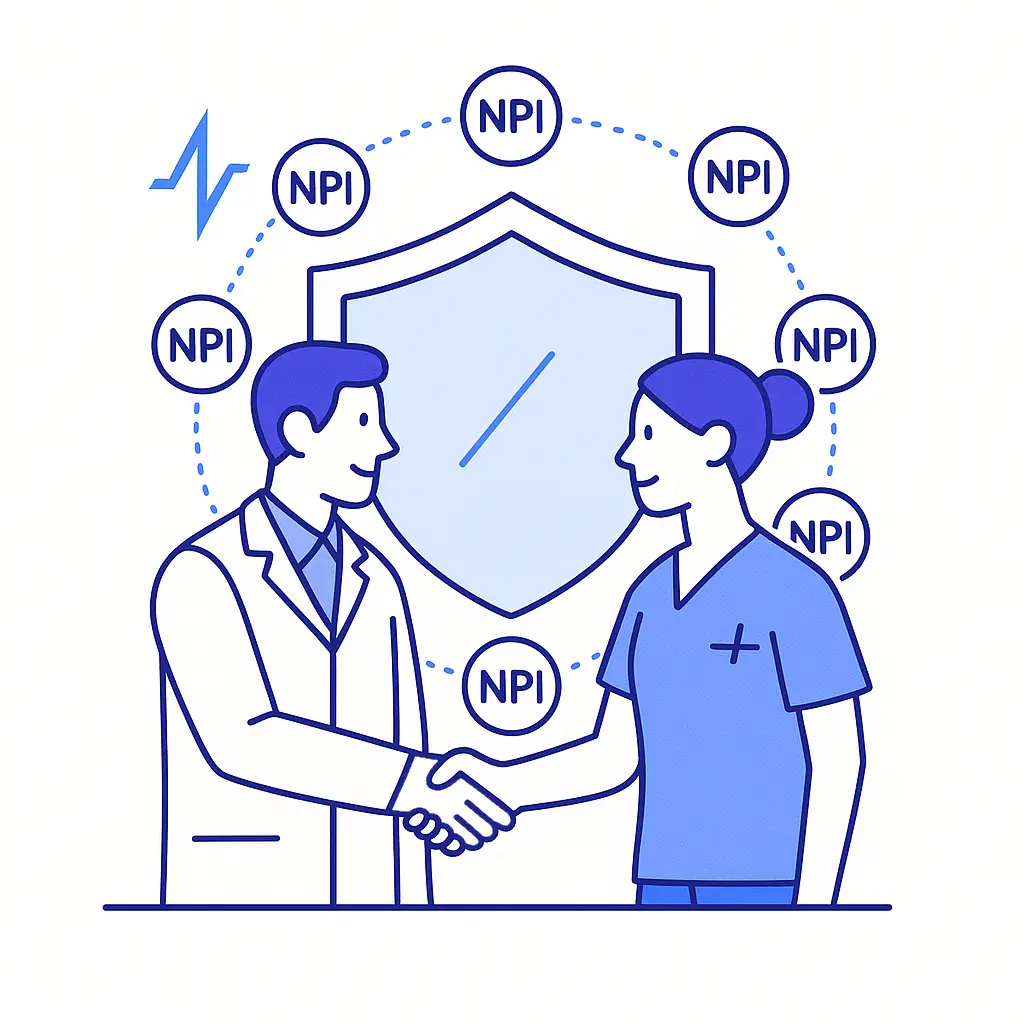
This unique identification allows for the creation of comprehensive provider profiles by merging information from various sources. These legacy provider identifiers help healthcare organizations enhance operational efficiency and maintain accurate, consistent provider information across systems to identify health care providers, atypical providers, and entity information. To manage and update NPI information online, providers may need to create a user id.
Understanding the National Provider Identifier
The National Provider Identifier (NPI) is a unique, 10-digit number assigned to covered health care providers in the United States. Established under the Health Insurance Portability and Accountability Act (HIPAA) Administrative Simplification Standard, the NPI is designed to streamline healthcare transactions and enhance accountability across the industry. Unlike legacy provider identifiers, the NPI is an intelligence-free numeric identifier, meaning it does not contain embedded information about the provider’s medical specialty, location, or other personal details.
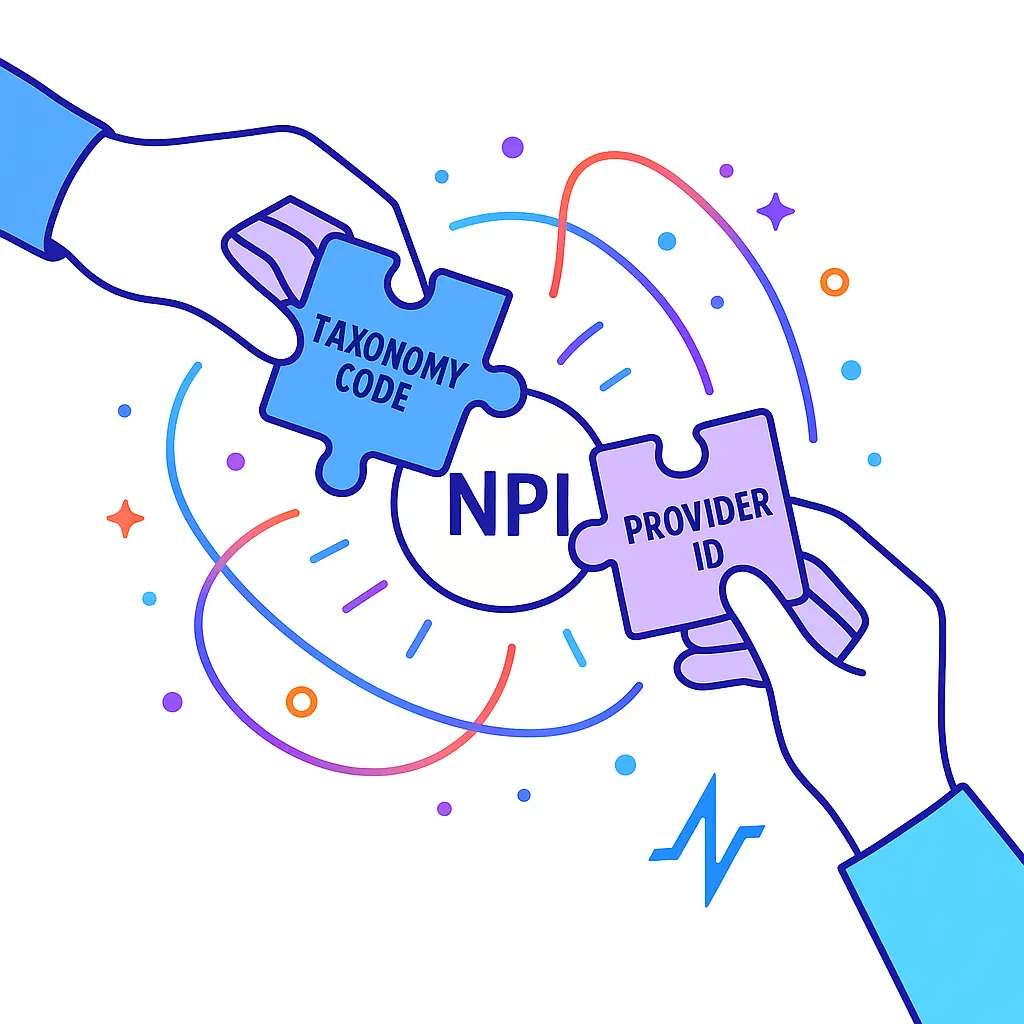
This standardization supports the insurance portability and accountability goals of the act, making it easier for healthcare providers to participate in administrative and financial transactions.
By serving as a universal identifier, the NPI helps ensure that providers are recognized accurately and consistently throughout the healthcare system, improving the efficiency and reliability of health care data exchange.
National Provider Identifier NPI Standard
The National Provider Identifier (NPI) standard is a foundational element of the HIPAA Administrative Simplification Standard, designed to enhance the efficiency and accuracy of healthcare transactions. Under this standard, all covered healthcare providers, health plans, and health care clearinghouses are required to use NPIs in their administrative and financial transactions. This uniform approach supports the portability and accountability of healthcare information, making it easier for providers to identify themselves and their patients across different systems.
By relying on a unique and standardized identifier, the NPI standard reduces the risk of errors, streamlines administrative processes, and improves the overall quality of healthcare services.
The adoption of the NPI standard is a key step in ensuring that healthcare providers can deliver services efficiently while maintaining compliance with federal regulations.

NPI Eligibility and Application
Eligibility for an NPI extends to a wide range of healthcare providers, including both individuals and organizations. Physicians, nurses, dentists, and other individual practitioners, as well as hospitals, clinics, and group practices, all qualify to apply. The Centers for Medicare and Medicaid Services (CMS) oversees the application process, which is free and accessible online through the National Plan and Provider Enumeration System (NPPES) or by mail.
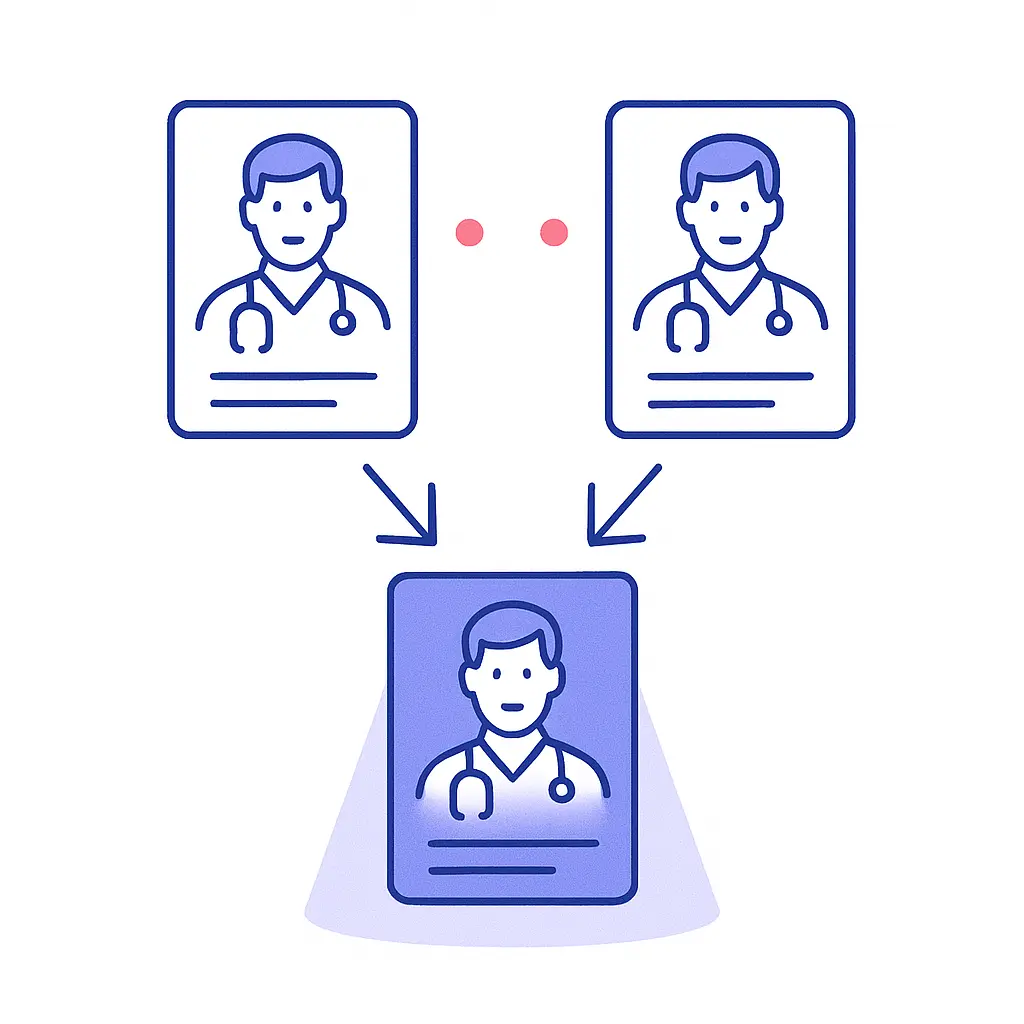
When applying, providers must submit essential identifying information such as their name, Social Security Number, practice address, and a taxonomy code that specifies their area of specialty.
This information ensures that each provider is accurately classified within the national plan and provider enumeration system, supporting efficient integration with Medicare, Medicaid, and other health services.
By following these steps, healthcare providers can obtain their NPI and participate fully in the administrative and billing processes required by today’s healthcare environment.
NPI Number Assignment and Use
Once a healthcare provider is assigned an NPI number, it becomes a permanent identifier that remains with them throughout their career, regardless of changes in job or practice location. This NPI number must be used in all HIPAA standard transactions, such as claims submissions, eligibility checks, and referrals, ensuring consistency and accuracy in administrative and financial processes.
Healthcare providers are required to share their NPI with other providers, health plans, and health care clearinghouses to facilitate seamless billing and administrative workflows.
Additionally, the NPI is used in program integrity files to help identify healthcare providers and support compliance with federal regulations.
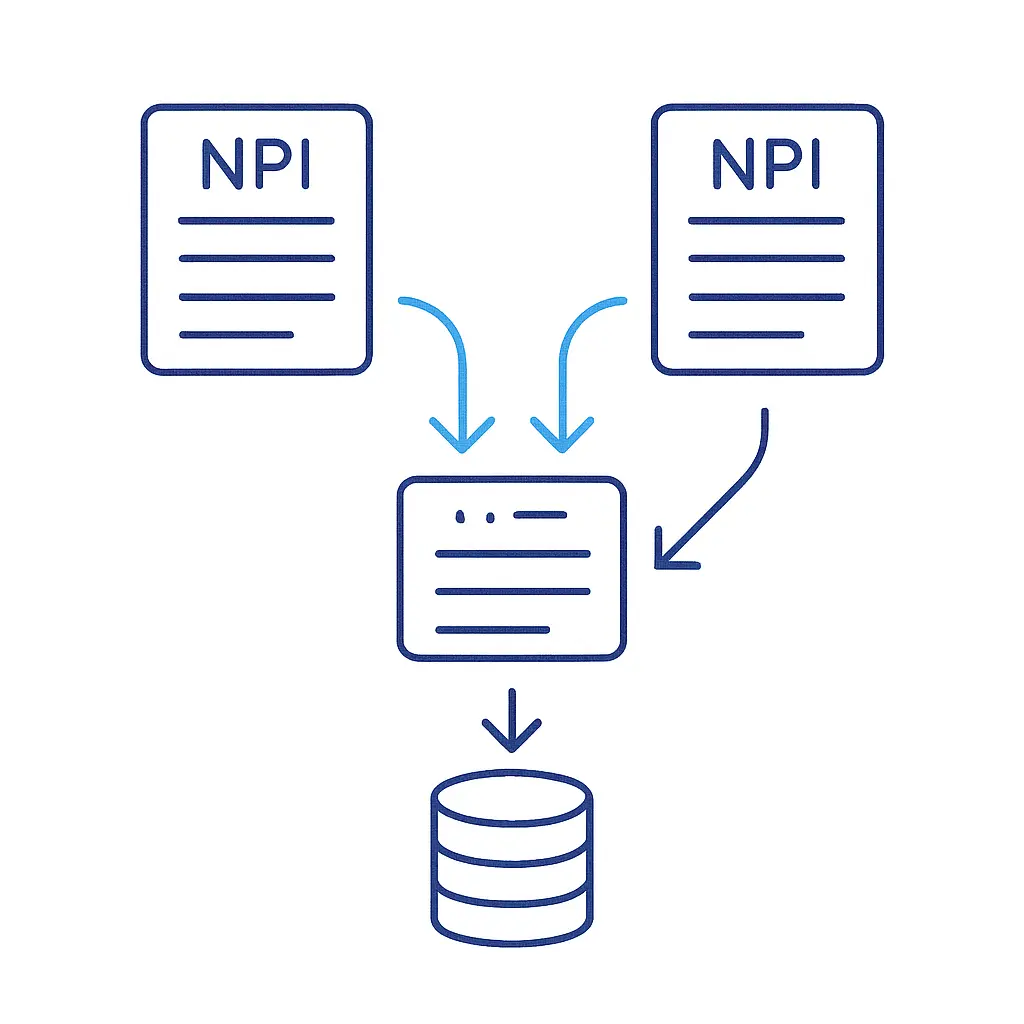
By using the NPI in all standard transactions, providers help maintain the integrity of healthcare data and streamline the billing process, ultimately supporting better patient care and more efficient health system operations.
Health Plans and NPI Matching
Health plans play a critical role in NPI matching by using NPIs to accurately identify healthcare providers in all administrative and financial transactions.
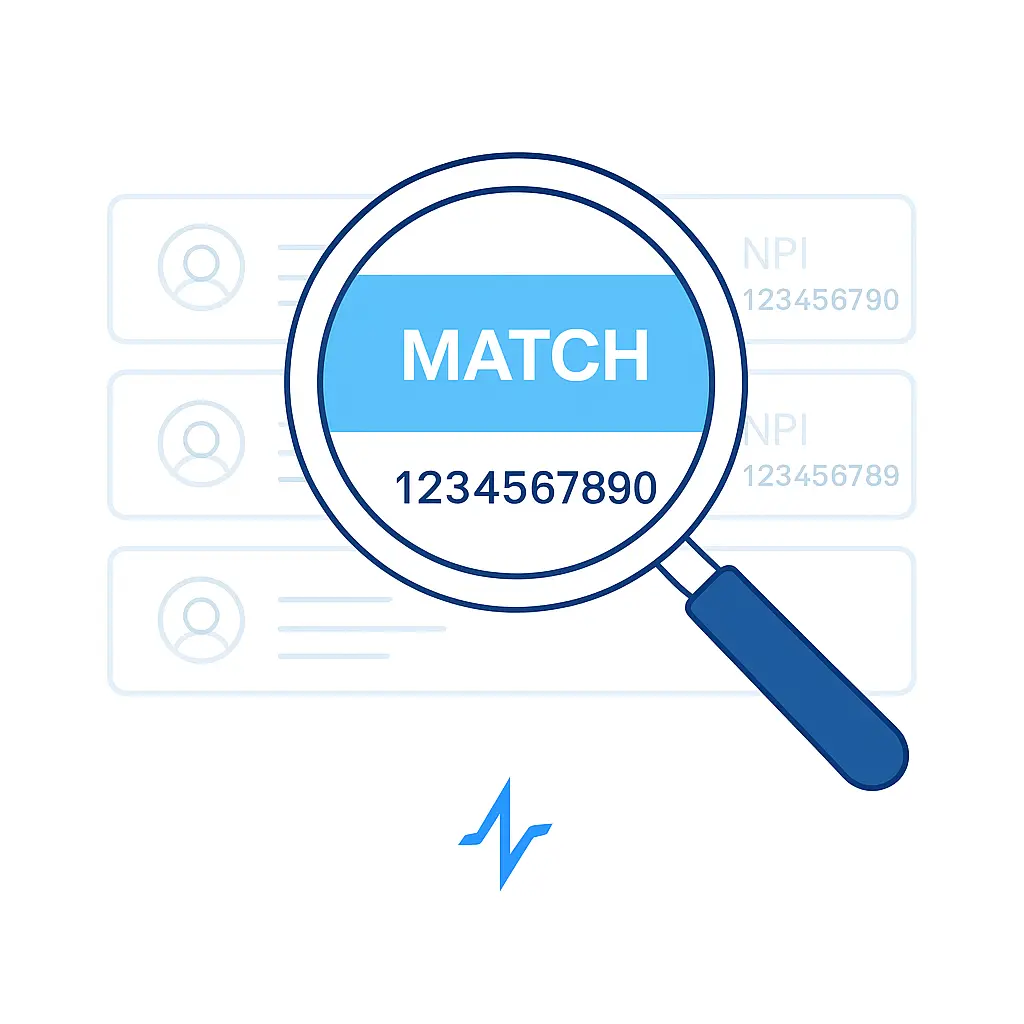
This process involves matching the provider’s NPI with their name, address, and taxonomy code to ensure that billing and claims are processed correctly.
Health plans also use NPIs to maintain accurate internal files and to coordinate benefits with other health plans, supporting seamless service delivery and claims management.
By leveraging the NPI, health plans can reduce administrative errors, improve billing accuracy, and enhance the overall quality of healthcare services. Additionally, the use of NPIs enables health plans to track provider performance and support quality improvement initiatives, reinforcing accountability and efficiency throughout the healthcare system.
Benefits of Accurate NPI Matching
The national provider identifier (NPI) is a key element of the Health Insurance Portability and Accountability Act of 1996 (HIPAA). This legislation was enacted in 1996. Utilizing NPIs helps organizations comply with federal regulations effectively, maintaining the integrity of healthcare provider information. Accurate provider’s npi matching ensures that regulatory compliance is upheld, contributing to the overall trust and reliability of healthcare data. The accountability act of 1996 further emphasizes the importance of these identifiers in the healthcare system.
Beyond regulatory compliance, precise NPI matching significantly enhances billing accuracy.
By ensuring that the correct provider’s npi is included on all claims and used in billing processes, healthcare organizations can minimize claim denials and streamline their financial transactions.
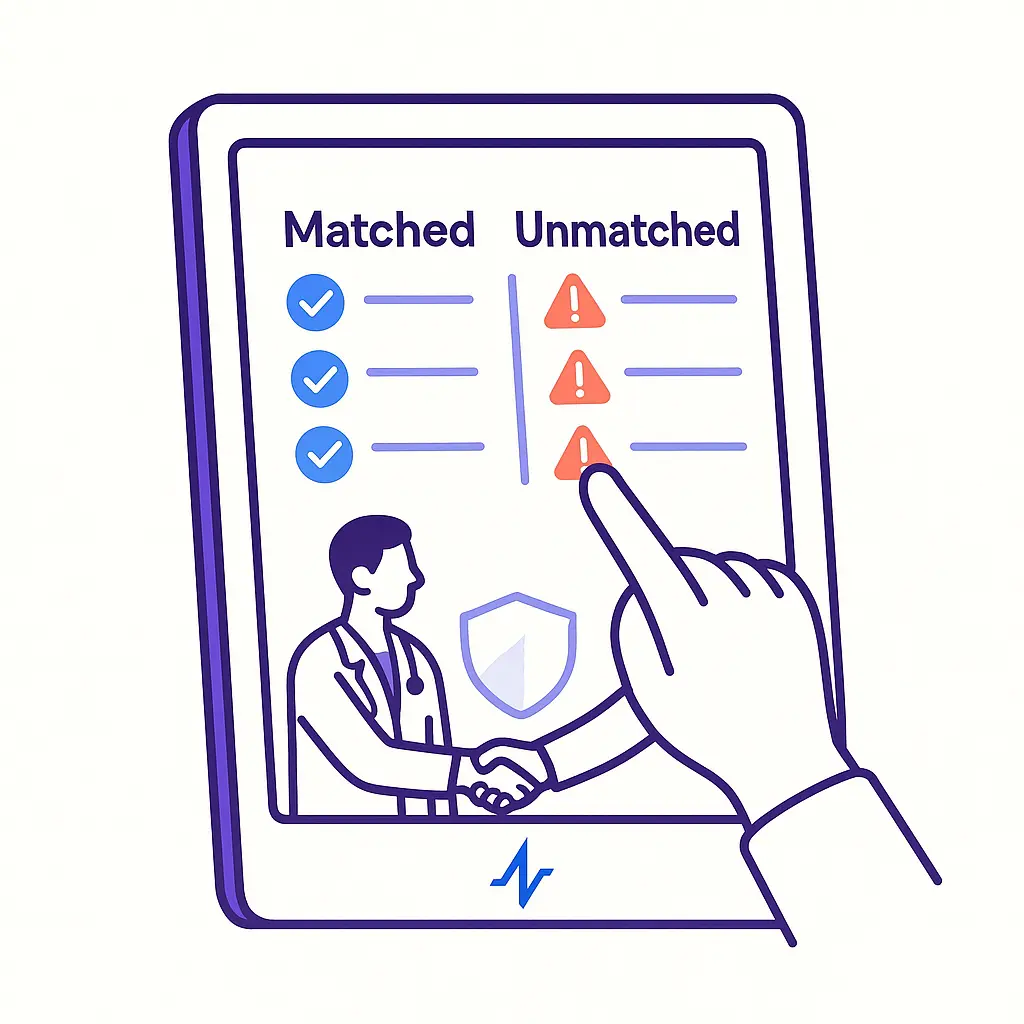
The provider’s npi is essential for proper claim submission and processing, as it uniquely identifies the healthcare provider involved in the transaction. Additionally, this accuracy supports ethical marketing practices by correctly targeting healthcare professionals while adhering to privacy standards.
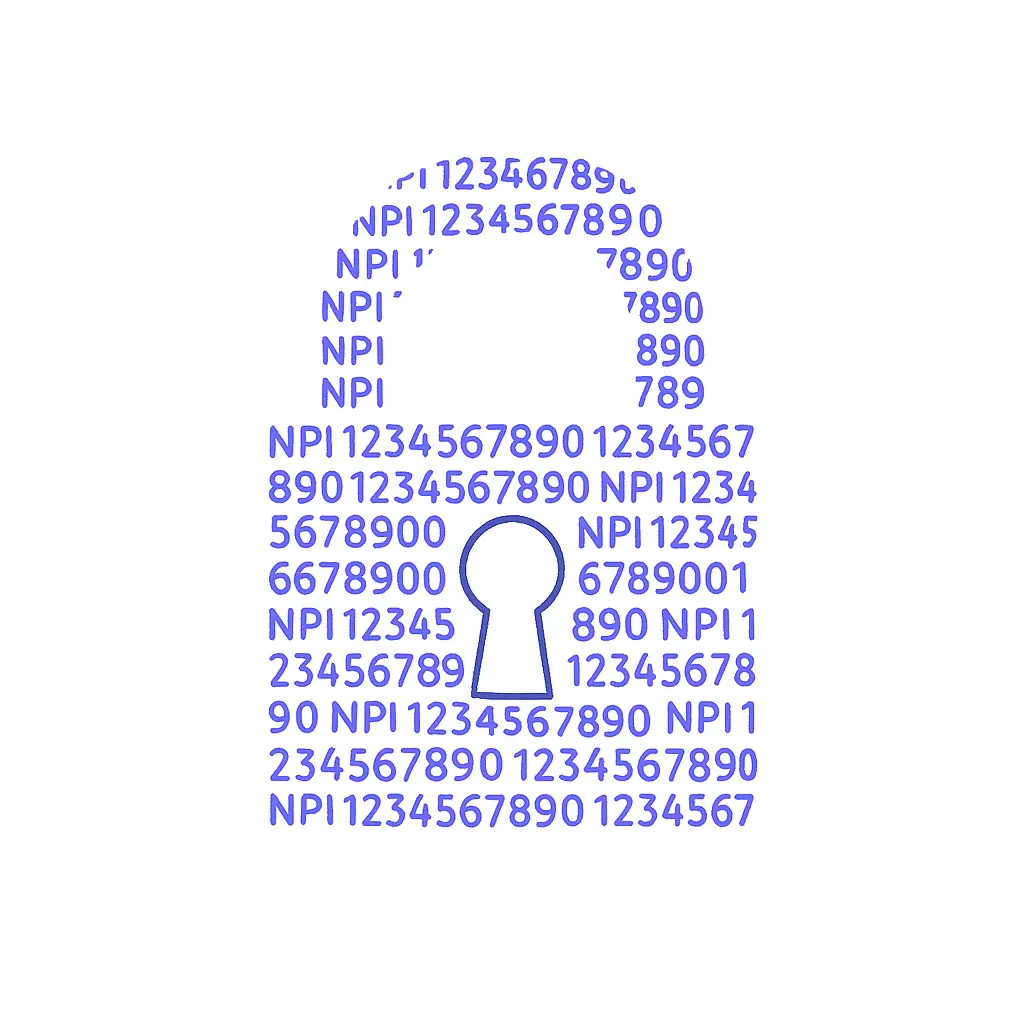
Data encryption and secure connections between providers and their identifiers are critical components of NPI matching.
This security protects healthcare information from unauthorized access and supports compliance with data privacy regulations, keeping sensitive provider data confidential.
How NPI Matching Works
NPI matching involves identifying healthcare providers and other health care providers across different datasets using their unique NPI numbers. One effective way to enhance match accuracy is by utilizing the National Plan and Provider Enumeration System (NPPES) database, which can help identify multiple NPIs linked to a single provider. This comprehensive approach ensures that all relevant data is considered during the matching process, including the npi enumerator.
The process employs advanced algorithms and both exact and fuzzy matching techniques to ensure high accuracy.
Validation steps are crucial, including checking for data variations and discrepancies to enhance the reliability of the matched data.
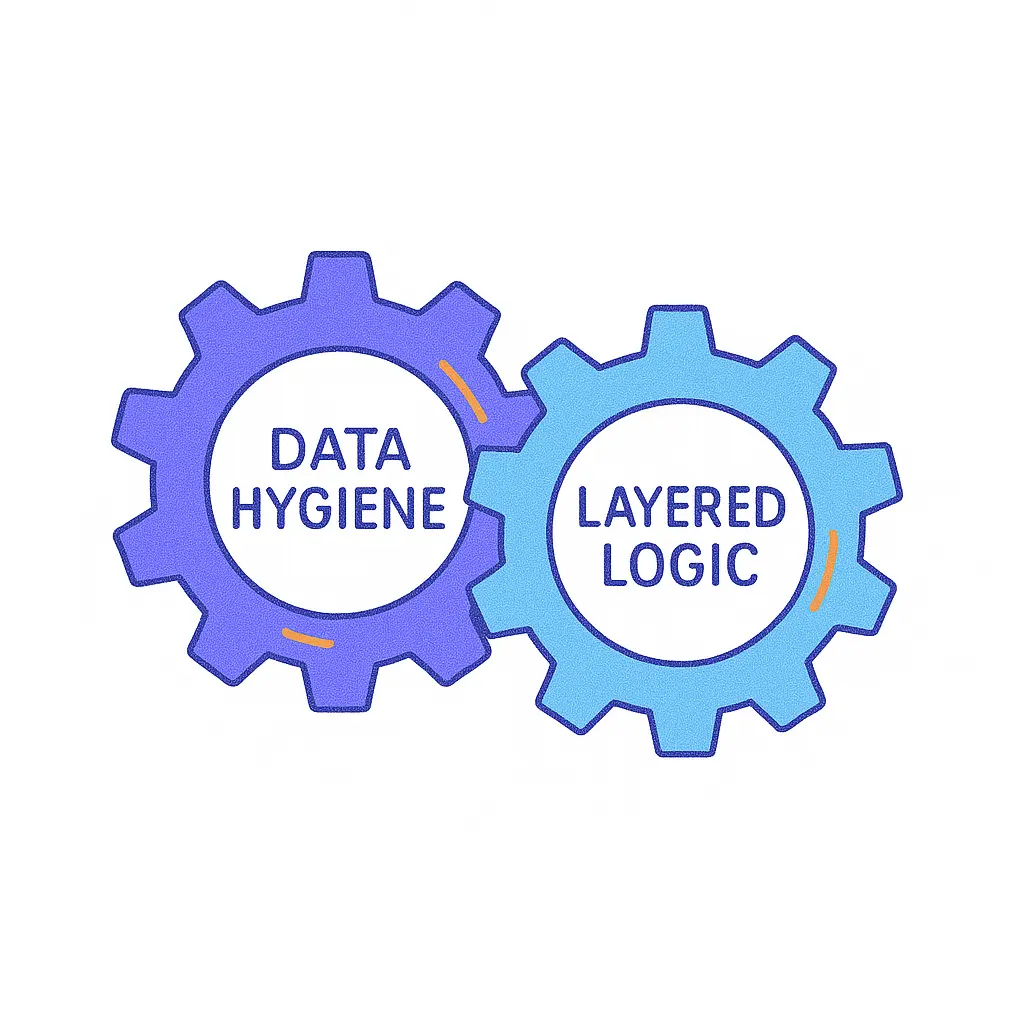
These steps collectively ensure that healthcare organizations can trust the matched NPI information for their operational needs.
Common Challenges in NPI Matching
Despite its importance, NPI matching is not without challenges. Duplicate NPIs often arise due to administrative mistakes or a lack of communication among staff. These duplicates can lead to significant issues in claims processing and provider identification, causing delays and inaccuracies in healthcare services.
Outdated information in NPI databases is another common challenge. As providers change locations or update their practice details, these location changes need to be reflected promptly in the NPI system to avoid discrepancies. Data entry errors, such as misspellings or incorrect entries, can also impact the accuracy of NPI matching, making it difficult to ensure that the right provider is identified.
To address these challenges, healthcare organizations should implement robust systems and processes for managing and updating NPI information regularly, thereby mitigating risks and streamlining administrative and financial transactions, including HIPAA standard transactions and the mandated administrative simplification standard.
How to Match NPI Lists Efficiently
Efficiency in NPI matching starts with data hygiene.
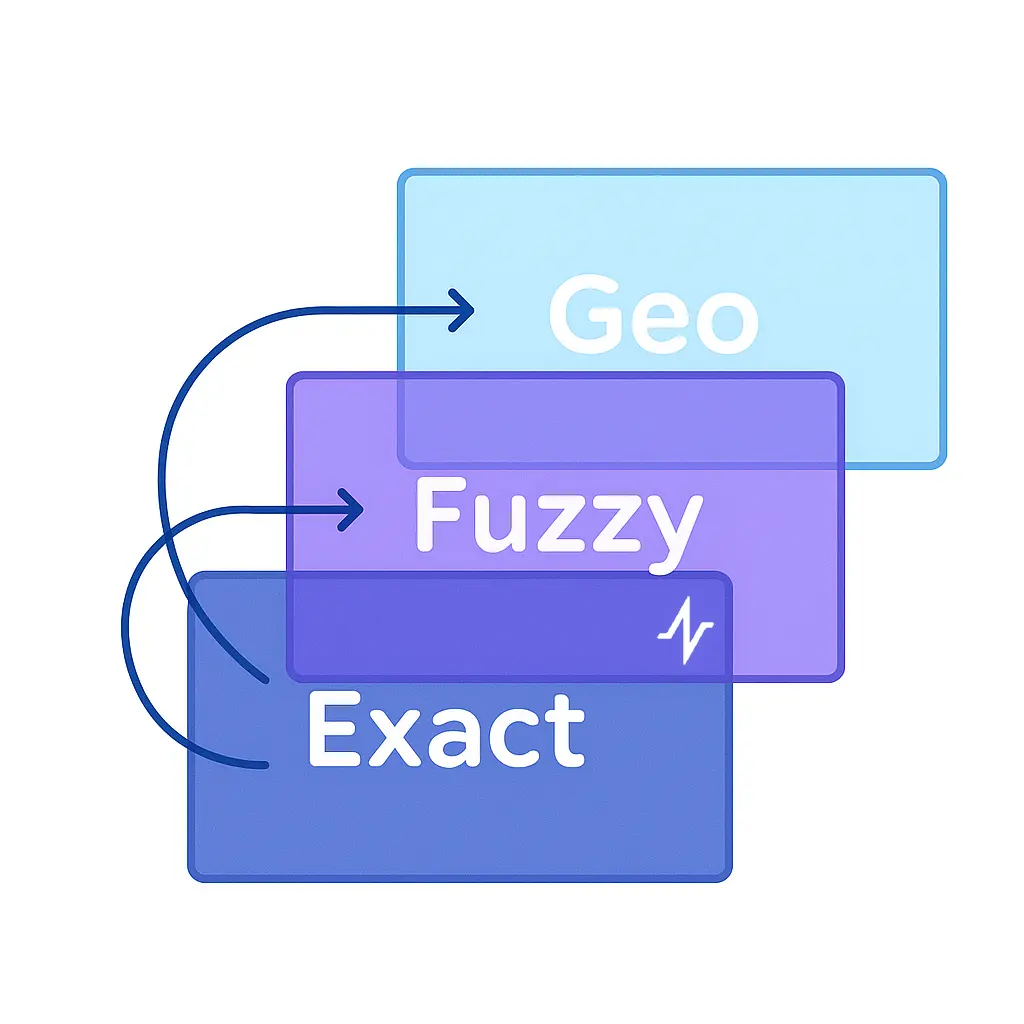
Cleaning internal records before matching with the NPI registry helps prevent errors and ensures that the data used is as accurate as possible.
Layered matching logic, which integrates techniques like fuzzy matching and geographic filters, can further enhance accuracy by accounting for variations in provider information.
Confidence scoring is another valuable technique, allowing organizations to identify uncertain matches and review them for accuracy. Enriching matched records with attributes from the NPI registry improves the quality of provider profiles.
Regular updates from the NPI database ensure that provider data remains current and accurate.
Best Practices for Effective NPI Matching
Maintaining accurate NPI records requires regular updates. Advanced algorithms can enhance the matching process by allowing for flexible comparisons of organization names and addresses, ensuring that even slight variations are accounted for. This flexibility is crucial for accurate provider identification.
Another best practice is matching providers using fax numbers, which can be an effective technique for grouping providers within the same facility and enhancing group practices.
Implementing these best practices significantly improves the accuracy and reliability of NPI matching processes for healthcare organizations.

Tools and Technologies for NPI Matching
Real-time matching capabilities are essential for updating and validating provider information promptly, reducing discrepancies and ensuring the accuracy of NPI data. Tools that score the similarity of text values can assist in overcoming variations in organization names and addresses, further enhancing match accuracy.
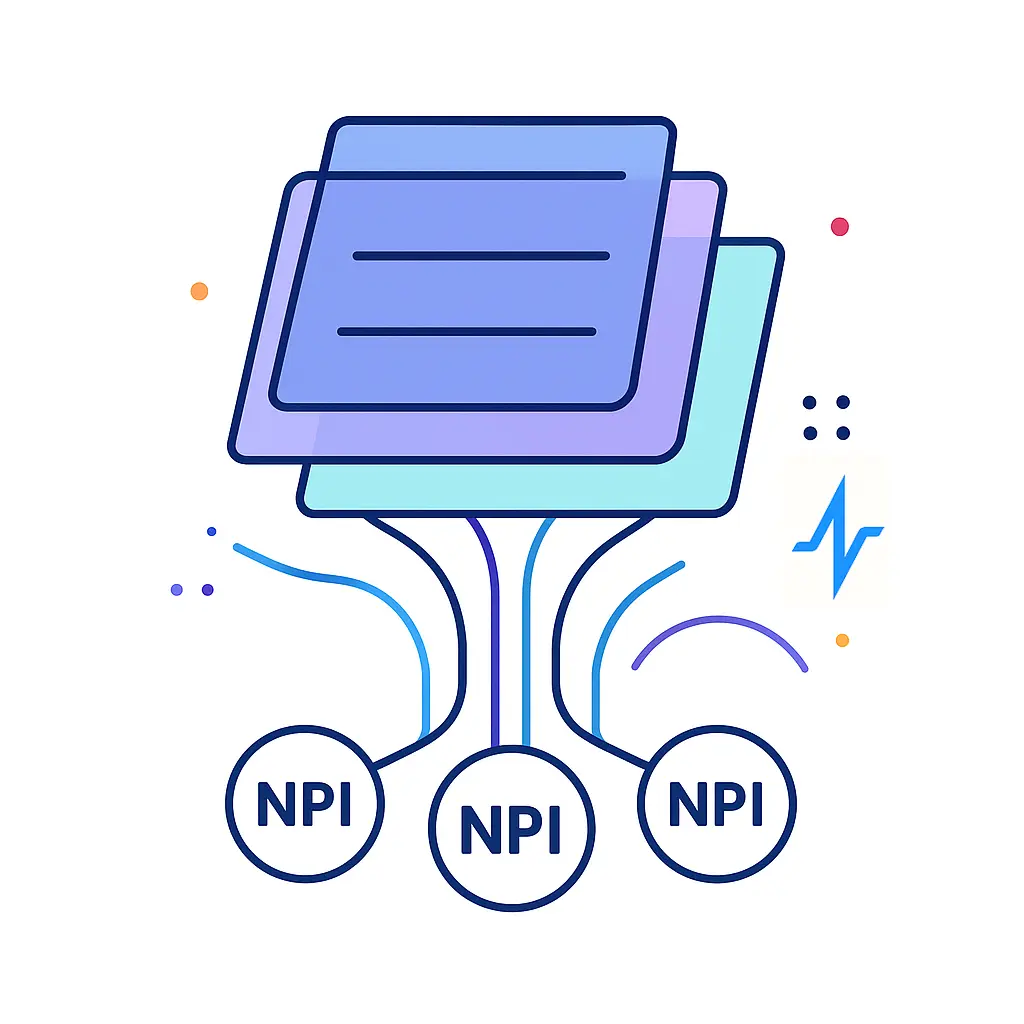
Advanced tools and technologies collectively play a crucial role in ensuring effective NPI matching for healthcare providers.
These tools improve the accuracy and reliability of NPI matching, enhancing service delivery in the healthcare sector.
Using Matched NPI Data to Drive Engagement
Matched NPI data allows for precise segmentation based on metrics such as procedure volume and practice setting. This precision enables healthcare organizations to tailor their messaging to specific provider environments, enhancing the relevance and effectiveness of their outreach efforts.
Analyzing matched NPI data can reveal influential relationships and referred referral networks among healthcare providers.
When providers refer patients to other providers, they must use NPIs to ensure proper billing and claims submission.

This insight is invaluable for optimizing outreach timing and targeting affiliated providers within larger health systems, ultimately driving better engagement and outcomes.
Pulse Health’s Approach to NPI Matching
Pulse Health employs a platform that integrates a vast array of healthcare data, facilitating precise and efficient NPI matching. This unified data and marketing automation platform offers pre-built integrations for best-in-class healthcare professional (HCP) engagement. This platform enables life science and biotech companies to achieve precise segmentation and targeting, even for hard-to-reach healthcare professionals.
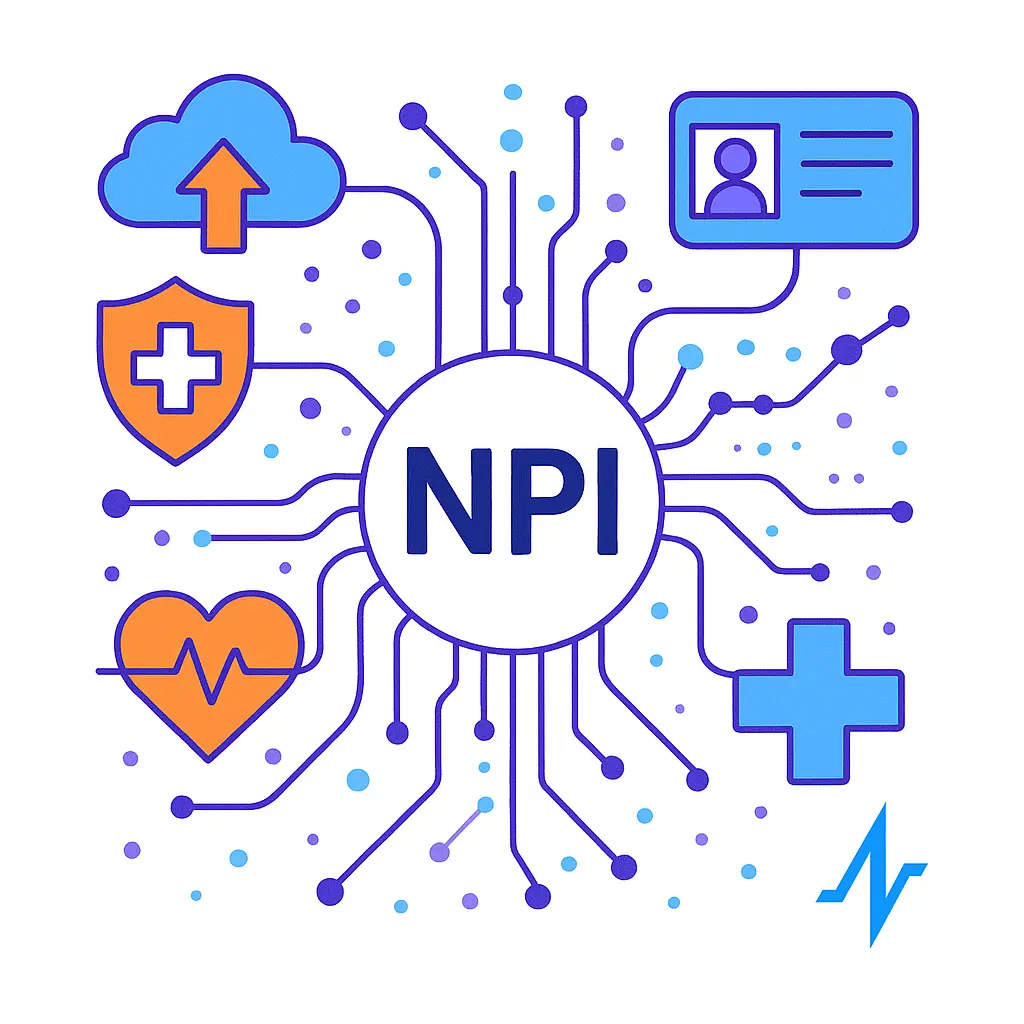
Pulse Health’s comprehensive and compliant dataset includes over 1 million healthcare professionals and 30 million opt-in patients, ensuring that the data used for NPI matching is both extensive and reliable.
This approach enables pharma manufacturers to streamline their operations and focus more on patient care by reducing administrative burdens and improving data accuracy.
Case Studies: Successful NPI Matching with Pulse Health
Pulse Health has a proven track record of successful NPI matching.
For example, one pharma manufacturer reached out to us when they want to drive scripts with a new marketing campaign. The results speak for themselves:
Goal: Convert 9,000 HCPs from “low” to “high” lead score through email campaign.
Result: Exceeded target — reached ~11,000 high‑score HCPs within months
A life sciences company focusing on GERD approached us for help with marketing their newest drug.
Within a few months, Pulse enabled 15,000 organic patient sign-ups for co‑pay card downloads — signaling strong brand awareness and adoption
According to another client, automated reminders at device expiration led to “thousands and thousands of dollars” in incremental compliance revenue — showing how targeted messages enhance patient outcomes and revenue.
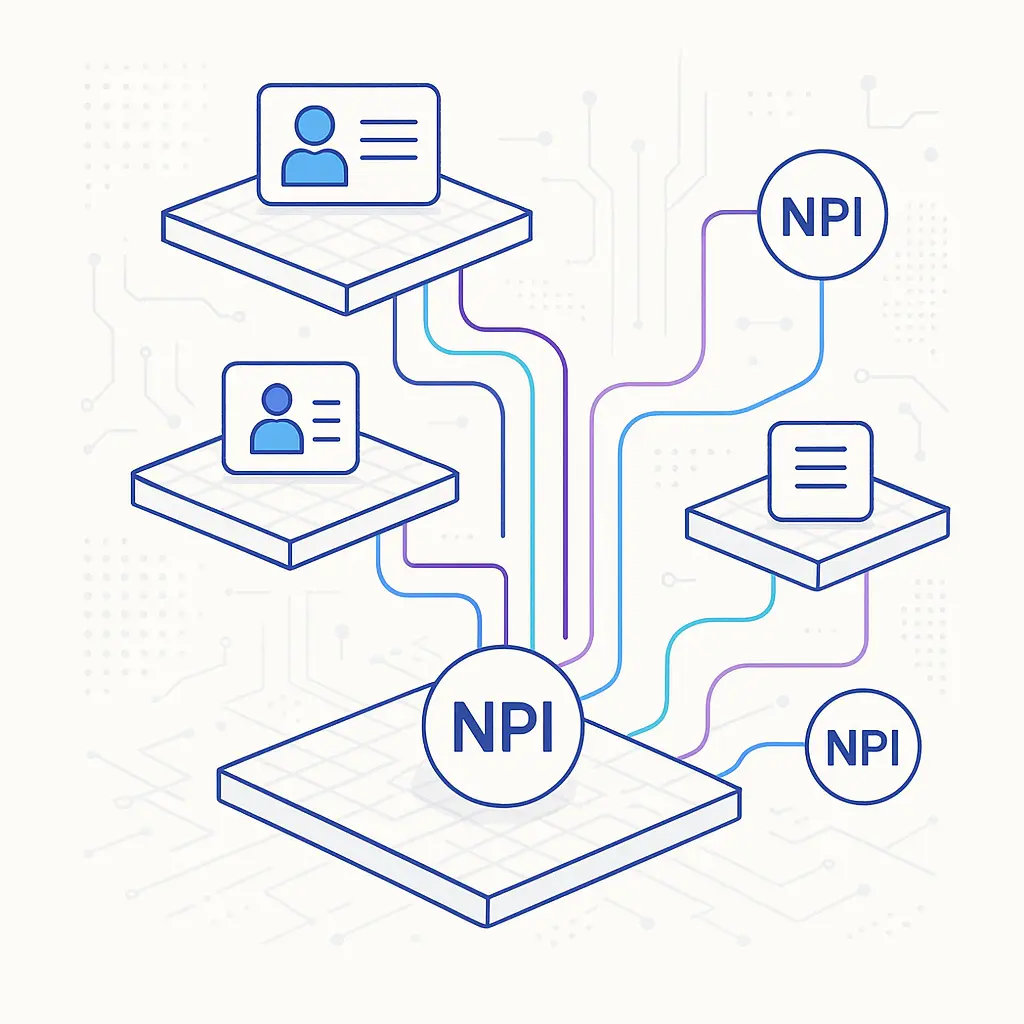
These case studies collectively illustrate how Pulse Health’s advanced analytics and comprehensive dataset can significantly improve healthcare providers’ operational workflows, enabling them to focus more on patient care.
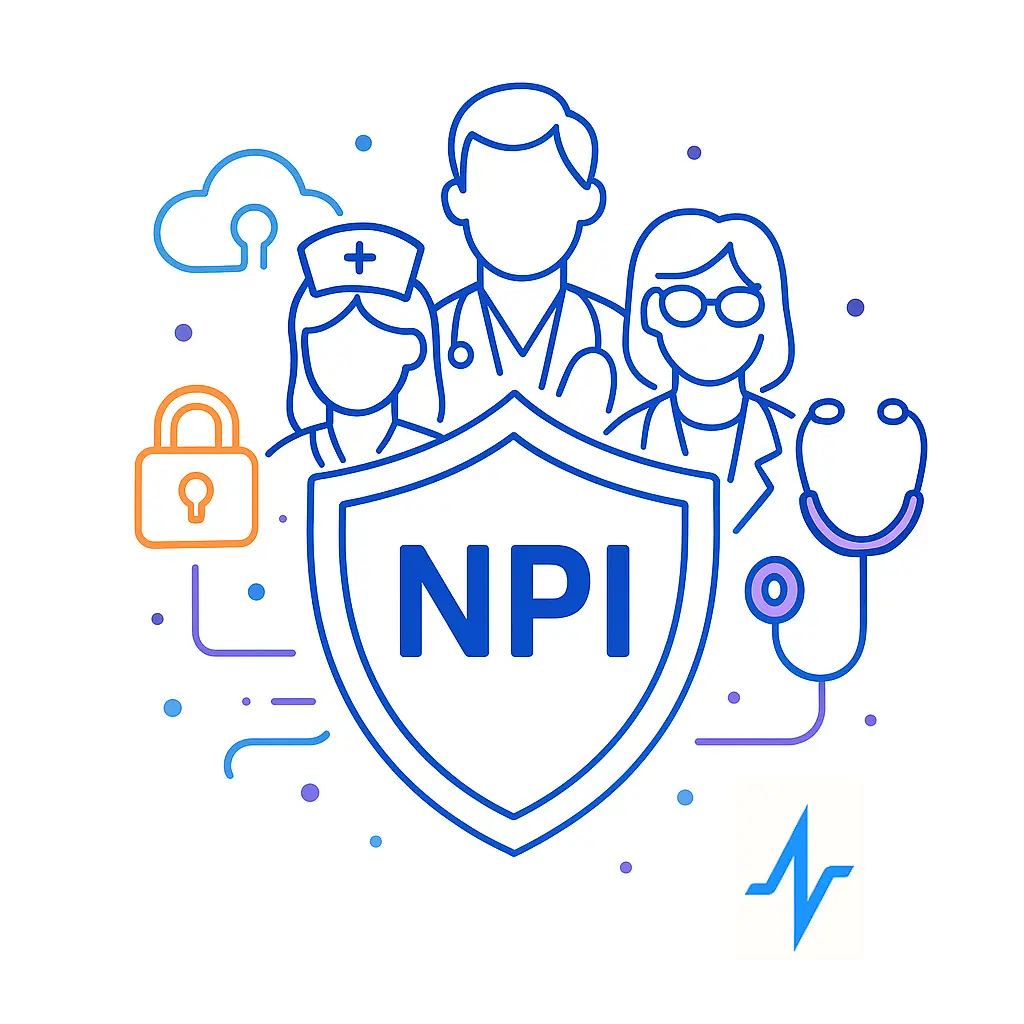
Mastering NPI matching is essential for healthcare providers to ensure NPIs are obtained for accurate provider identification, compliance with federal regulations, and improved operational efficiency.
By understanding the benefits, challenges, and best practices of NPI matching, healthcare organizations can enhance their data integrity and billing accuracy.
Pulse Health offers a comprehensive platform to streamline NPI matching, with proven success in reducing claim denials and administrative costs. Embrace these practices and tools to drive better engagement and focus more on delivering exceptional patient care. Take the first step towards better healthcare operations today.
Get Started With Pulse Health Today
Ready to revolutionize your NPI matching process? Schedule a demo with Pulse Health today to explore our advanced solutions. Our patient-centered approach, coupled with cutting-edge technology and personalized care, ensures that your healthcare operations are both efficient and effective.
Frequently Asked Questions
NPI matching is the process of linking National Provider Identifier numbers to the digital identities of healthcare professionals to facilitate accurate provider identification. This is essential for maintaining integrity in healthcare data management.
Accurate NPI matching is essential for compliance with federal regulations and enhances billing accuracy, thereby ensuring the integrity of healthcare provider information. This not only fosters trust in the healthcare system but also mitigates operational risks.
Common challenges in NPI matching include duplicate NPIs, outdated information in databases, and data entry errors. Addressing these issues is crucial for maintaining accurate and reliable healthcare data.
Healthcare organizations can enhance the efficiency of NPI matching by implementing techniques such as data hygiene, layered matching logic, confidence scoring, and ensuring regular updates from the NPI database. This approach facilitates accurate and effective matching.
Pulse Health adopts an advanced analytics platform that integrates extensive healthcare data, ensuring precise and efficient NPI matching. This approach enhances accuracy in the identification and verification of healthcare providers.
